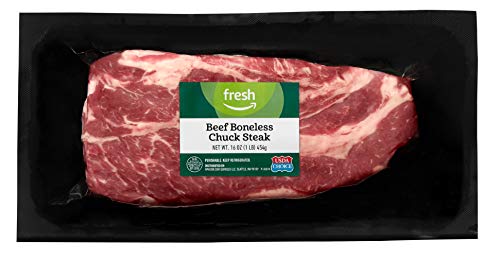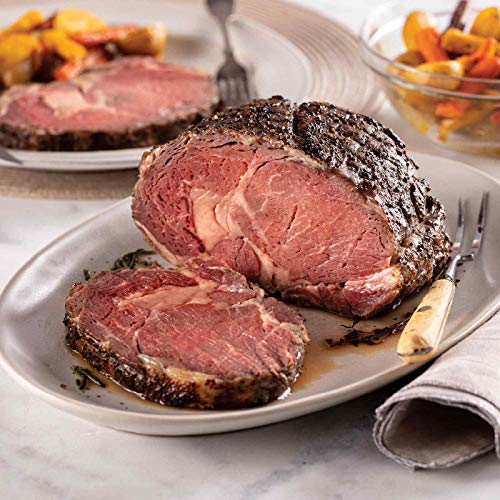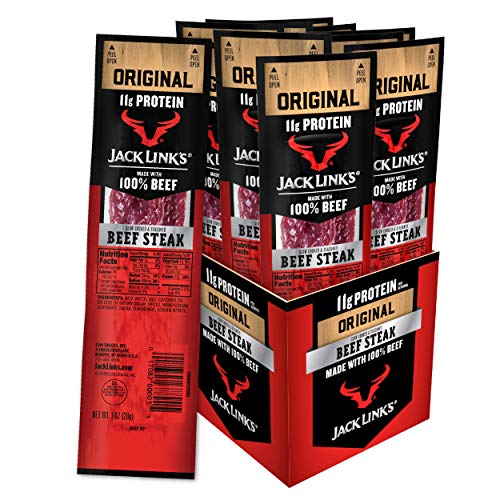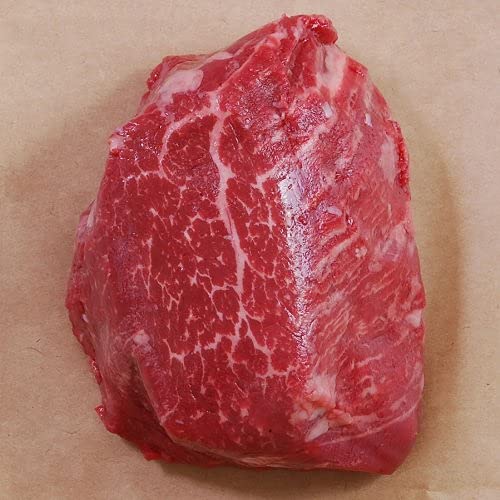What Is the Best Meat to Use for Making Beef Jerky
If you haven't run into jerky and don't know what it is, jerky is actually dried lean trimmed meat which has been cut into strips. The drying process would include salt to prevent the beef jerky from accumulating bacteria before the dehydration process is completed.
Beef jerky can be a satisfying snack that is full of protein, yet low in carbohydrates. Athletes are getting hooked with the beef jerky as it can provide essential vitamins and minerals needed for muscle-building, sodium replenishment, and a lot more.
Making a homemade beef jerky is easy, but choosing the right cut of the beef could be tricky. You may opt-in for the pricier cut, which is the flank steak. It's one of the leanest beef cuts that is perfect to make nice thin strips of beef jerky.
You can also choose the eye of round, top or bottom round, or London broil cuts as they can be a great option for your beef jerky. Just make sure to trim some extra fats on the meat before slicing them into thin strips.
If you are making a homemade beef jerky, make sure to cut the beef into thin slices that are at 1/8 to 1/4-inch thick.
Best Meat For Jerky
What Qualities Should Be Present on the Meat for Beef Jerky
You would like that beef jerky that is chewy, yet not too tough when you bite it. A small trace of fats and the bursts of flavor would indicate a good jerky quality.
For the second bite that you don't find any of those qualities and you don't want to eat it anymore, that means you are getting a bad quality beef jerky.
To know if the beef jerky has been seasoned properly, you should be able to notice the saltiness either from the salt or other sodium-based condiments, such as soy sauce. Aside from providing great flavors to the beef jerky, the salt also helps in speeding up the drying process of the jerky meat.
The soy sauce on the other hand, can help replenish the lost sodium contents during the dying process. Commercial jerky makers are adding some soy sauce as it also makes the beef jerky a bit more flavorful.
Creating a savory marinade is also one of the main keys of having a good quality on your homemade beef jerky. If you love some peppery hints on the jerky, just make a marinade using soy sauce, Worcestershire sauce, black pepper, liquid smoke, onion powder, seasoned salt, and garlic powder.
What Are the Different Cuts of Beef for Jerky
Learning the different cuts of the cow would help you understand and puck the best cuts of beef for making homemade beef jerky. Some parts are mainly used for roasts, steaks, and ground beef or ground meat products.
Brisket Cut
Beef brisket is best suited for BBQs, pastrami, and corned beef. This marbled cut has coarse grain and toughness that is ideal for a slow cooking process under low temperature.
This brisket is usually found below the chuck, which is under the cow's shoulder section. Beef brisket usually contains fat, which makes it prone to spoilage. You can still use this beef cut for your jerky, but make sure to prepare it on time and properly to prevent spoilage.

Chuck
The chuck part is usually used in bone-in or boneless steaks and roasts. It is located at the top of the brisket, which is the top shoulder of the cow.
The chuck is also trimmed to create that perfect steak cut, in which the trimmings are grounded and turned into ground meat for hamburger patties.
Using the chuck steak cut may take time for making beef jerky as you need to cut those excess fats before slicing them into thin slices. Just like the brisket, higher amounts of fat would result in faster spoilage of the meat.
You can buy it here.
Plate Cut
This part of the cow is primarily used in beef short ribs and pot roasts as it is located at the underbelly of the animal. A cut for skirt steak (round steak), called fajitas, is also located at this portion.
The trimmings of the plate are also grounded and turned into patties for hamburgers. The skirt steak of the plate cut could make a chewy beef jerky, but you have to keep in mind that it can be too tough and fatty for the dehydrator.

Ribs
Ribs are primarily used in steaks as this meat part contains the prime rib and the eye rib. The meaty and flavorful beef short ribs are also taken in just behind the chuck, toward the rear of the cow.
This part of the cow is least considerable to make a good jerky as it is both fine-grained and fatty. Those textures are not suitable to be turned into thin strips and won't work well in the dehydrator.
The dried meat rib part might just crumble after placing it into the dehydrator. This is due to the fine texture that won't hold long during the drying process.
You can buy it here.

Flank Cut
This kind of steak cut is quite good for grilling. You can have a flank cut toward the animal's rear legs, beneath the loin's sections. It usually has a coarse texture that gives way to a tender bite when the steak is thinly sliced against the muscle fibers.
The steak made from the flank part has a bold and meaty flavor on its own. But it is a very good cut for making a good beef jerky as the meat can hold well on marinades. The cuts from the loin could be costly, depending on the quantity of the jerky that you are going to make.
You can buy it here.

Short Loin
Another good candidate for a good jerky is the center section of the cow, which is located just behind the rib. Though short loin is mainly used in porterhouse and T-bone steaks, it has some qualities to make it into a good jerky.
The short loin meat is very tender, though you can find some marbling on the meat, it is still easy to cut into thin slices.
You can spot and buy a short loin at your local grocery store or by clicking here.

Sirloin Cuts
Sirloin cuts are composed of the sirloin, bottom sirloin and top sirloin, which are found along the top rear area of the cow, except for the bottom sirloin meat which can be found beneath the top sirloin, just above the flank.
This portion usually makes a good tender and flavorful roast. This means that you can also cut the sirloin tip into thin strips and make it into a beef jerky.
Make sure to cut or trim the outer layer of excess fat on sirloin steaks if you are going to use this meat on your jerky.
To buy a good quality of sirloin meat cuts, just click here.

Round Cut
This is a lean cut meat (probably the leanest cuts of meat) that is found in the "rump" section or the rear of the cow. The round meat has an easily detectable grain that can be sliced accordingly. This meat also has a chewier texture, thanks to its grain. You can ask your local butcher to have this cut when you are buying meat.
This meat is also well-suited for marinades, and that quality is best for the beef jerky making process. This is also one of the most used cuts in commercial production.
You can buy a pack of the round meat by clicking here.

Tenderloin Cut
The tenderloin cut includes filet mignon, chateaubriand, and tournedos, which are very tender parts of the meat. This is the long, narrow segment that divides the sirloin and top sirloin sections.
Using tenderloin for your jerky would provide a very tender version of the meat. This part might not be best suited for jerky as it won't hold that much on marinades and the texture is just too soft to get a good quality of jerky.
But if you want to give this a shot for a more tender jerky, you may purchase a tenderloin by clicking here.
Shank Cut
Probably of the most inconsiderable parts to be a good jerky would be the shank part. You can find this just below the brisket and round sections and the upper portions of the leg.
Its meat is too tough to be dehydrated, as it is primarily used in stews and other braises. You might not get that chewy goodness of a regular jerky would provide if you will use this portion of the meat instead.
How to Make a Tender Jerky or Beef Jerky Recipe
Jerky making should be easy, as long as you have the right cuts of beef. For this beef jerky recipe, get those recommended beef cuts that could provide a tender jerky. You can get the flank steak, eye rib, round roast or top round steak.
A good meat for beef jerky is your main key towards getting the best beef jerky or homemade jerky. Here are the list of the ingredients that you will need:
- 2 pounds of beef cut (preferably the flank steak, eye rib, round roast or top round)
- 2 tablespoons of Worcestershire sauce
- 2 teaspoons of black pepper (coarsely-ground )
- 1 teaspoon of liquid smoke (buy it here)
- 1 teaspoon of onion powder
- 1/2 cup of soy sauce (preferably low sodium, buy it here)
- 1 teaspoon of seasoned salt (buy it here)
- 1/2 teaspoon of garlic powder
How to make this beef jerky recipe:
- Slice the meat for beef jerky thinly, about 1/8 to 1/4-inch thick.
You can cut it with grain to get that chewier beef jerky or against the grain to attain that tender jerky. Note: placing the meat for beef jerky in the freezer for about 5-30 minutes before slicing will make it easier to cut.
- Using a large ziplock bag, transfer the cut strips and set aside.
- Get a small mixing bowl and combine the ingredients (except for the meat).
Whisk them together until well combined. Put the mixture inside the large ziplock bag with the cut meat. Toss or rub the mixture into the meat until it is evenly coated.
- Refrigerate it for about 30 minutes.
To ensure the flavors are infused, it is advisable to refrigerate the meat for up to 24 hours.
- If you are going to use a dehydrator in making beef jerky, make sure to lay the strips out in a single layer on the trays or wire rack of your dehydrator.
Cooking time may vary depending on the thickness of your meat and how hot the dehydrator is, and the brand of your dehydrator. It may take 8 hours or longer. Make sure to follow the instructions on your dehydrator. Once the meat of the beef jerky is dry, firm, and a little bit pliable, remove it on the dehydrator and transfer the beef jerky into a sealed container. To attain a longer shelf life, refrigerate the cooked beef jerky and it can be good for up to 1 month.
- For oven-made beef jerky, preheat the oven at 175°F.
Put the wire racks to the upper-middle and lower-middle positions. Using an aluminum foil, line two large baking sheets and place wire cooling racks on top of each sheet. The meat strips should be laid out on the wire racks in a single layer when making jerky using an oven. Same as when using the dehydrator, bake the beef jerky strips until they are dry and firm, yet still pliable a little bit. You can bake it for up to 4 hours, while flipping the strips onto the other side when it is halfway through the cooking process. Once cooked, remove the oven racks from the oven wire rack and transfer the meat of the beef jerky into a sealed container. Refrigerate to get a shelf life of up to 1 month.
Source: https://asian-recipe.com/best-meat-for-jerky-14721
0 Response to "What Is the Best Meat to Use for Making Beef Jerky"
Post a Comment